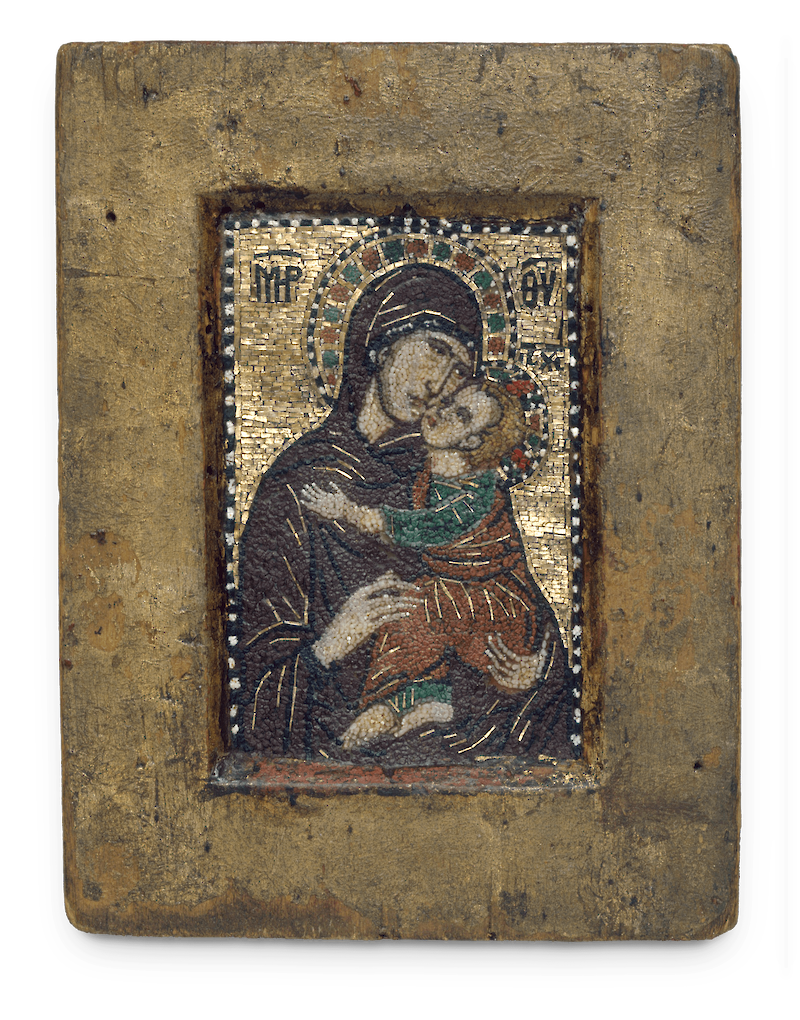


Mosaic was one of the most popular forms of Byzantine art, used to decorate homes and temples, floors, walls and even furniture, but in the 14th century Byzantine artists decided to double-down. By reducing the size of the mosaic tiles, called tesserae, they developed micromosaics like this madonna and child, which is about the size of a baseball card. This micromosaic from the Metropolitan Museum of Art depicts the Virgin Eleousa, the Virgin of Compassion, and is one of the few remaining devotional micromosaics left in the world.